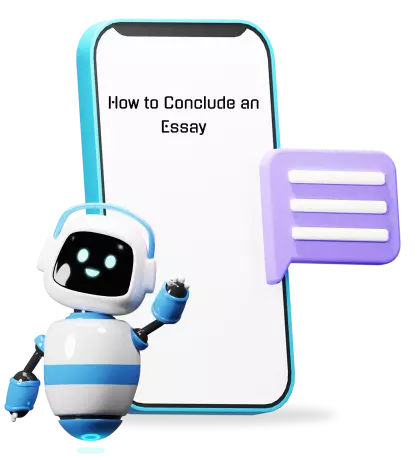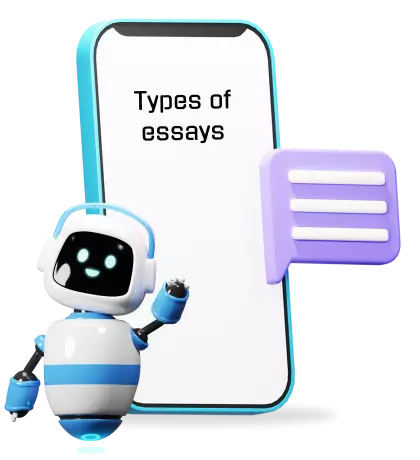🔥 First Order Is Free ( View Details )

13 min read
Published on: May 3, 2023
Last updated on: May 6, 2023

Picture this: you've spent hours crafting the perfect essay, only to have your reader lose interest after the first few sentences. Your carefully constructed argument falls flat, and your grade suffers as a result.
We've all been there. But what if there was a simple solution to this problem?
By reading this guide, you can captivate your reader's attention from the very start and set the stage for a successful essay.
In this guide, we'll explore the steps and tips to write introductions that leave a lasting impression.
So let's get started!
The essay introduction is a crucial step in essay writing. It is your chance to grab your reader's attention and set the tone for your entire paper.
It's the make-or-break moment that can determine whether your audience will understand the purpose of your essay.
A strong introduction not only provides a roadmap for your reader but captures their interest, while a weak one loses it.
Think of it like the opening act of a great performance. It's crucial to craft an introduction that hooks the reader and compels them to continue reading.
The introduction is the first impression that a reader will have of your essay. To make a great first impression, you should include these elements in your essay introduction format
A hook is the first sentence or two of your introduction that grabs the reader's attention and encourages them to keep reading.
There are various types of hooks, including anecdotes, quotes, statistics, or questions.
For example, "Did you know that over 60% of Americans believe in ghosts?" This kind of hook piques the reader's curiosity and entices them to read on.
A thesis statement is a clear and concise sentence that reflects the main idea of your essay. It should be included in the introduction and set the direction for the rest of the paper.
A strong thesis statement is crucial because it informs the reader of the topic and purpose of the essay.
For example, "The prevalence of ghost sightings in American culture can be attributed to societal beliefs and cultural traditions."
Expert Tip
Explore powerful thesis statement examples to elevate your assignments and essays!
Background information contextualizes your essay and improves reader's understanding of the subject matter. This could include historical context, definitions, or key terms related to the topic.
For example, in an essay about ghost sightings, you could provide some brief background on the history of ghost stories and their cultural significance.
By paying attention to these elements, you can easily get started on writing your introduction.
Crafting a compelling essay introduction paragraph is easier said than done. However, you can take specific steps to make sure your it is both attention-grabbing and informative.
Here are the essential steps to write a successful introduction:
A great introduction starts with a hook that captures your reader's attention.
This could be a surprising fact, a provocative statement, a rhetorical question, or a relevant anecdote. The hook should be engaging and related to the topic of the essay.
After the hook, you need to provide some context to help the reader understand the topic of the essay.
It may include historical, social, or cultural context, defining key terms or concepts, or discussing topic relevance.
The thesis statement is the main argument of your essay, and it should be presented clearly in your introduction.
It's important to ensure that your thesis statement is specific, concise, and relevant to the topic of your essay.
Writing A Thesis Statement Doesn't Have To Be Hard. Try Our AI Tool For Flawless Results!
After that, you should provide a brief overview of the main points that you will be discussing in your essay.
This will help the reader understand the structure of your essay and what to expect from each section.
The length and tone of your introduction will depend on the topic, audience, and purpose of your essay.
A longer introduction may be necessary for an essay with more body paragraphs. When it comes to tone, a conversational tone may be appropriate for a personal essay.
Always keep your audience in mind and tailor your introduction to their needs and expectations.
These steps can help you create a strong and engaging essay introduction that will set the tone for the rest of your paper.
When it comes to different types of essays, the introduction plays a crucial role in setting the tone and capturing the reader's interest.
How to write an argumentative essay introduction?
For an argumentative essay, the introduction should include a clear and concise thesis statement. It should also have a brief overview of the overall arguments, and a hook that grabs the reader's attention.
Here's a sample introduction for an argumentative essay:
"Climate change is a pressing issue that demands immediate action. Despite the overwhelming evidence that human activity is contributing to global warming, there are still some who deny the severity of the problem. In this essay, I will argue that we must take decisive action to mitigate the effects of climate change before it is too late."
In a narrative essay, the introduction should set the scene and introduce the main characters or events.
It should also set the tone and style of the essay and create a sense of intrigue that makes the reader want to keep reading.
Heres an essay introduction example for a narrative essay:
"I never thought I would find myself in the middle of the jungle, surrounded by dense foliage and strange creatures. Yet there I was, lost and alone in the heart of the Amazon. This is the story of my incredible journey, a tale of survival and self-discovery."
For a descriptive essay, the introduction should create a clear and vivid picture of the subject being described.
It should also establish the purpose of the essay while creating a sense of anticipation for what will be described.
"The sun was setting over the calm waters of the lake, casting a warm glow across the surrounding mountains. The air was filled with the sweet scent of pine trees, and the only sound was the gentle lapping of the waves against the shore. In this essay, I will describe the beauty of this serene landscape and the peace it brings to my soul."
In an expository essay, you should introduce the topic with some background information. It should also present a thesis statement that summarizes the main points of the essay.
"The internet has revolutionized the way we communicate, but it has also given rise to new forms of crime. Cyberbullying, identity theft, and hacking are just a few of the dangers that lurk online. In this essay, I will explore the risks associated with internet use and provide practical advice for staying safe in the digital age."
Here are some more essay introduction examples you can take help from:
When it comes to writing a good essay introduction, there are a few tips to keep in mind.
Know your audience: Understanding the intended audience can inform the approach to writing an essay introduction.
Practice brevity: Keep the introduction concise and avoid unnecessary details.
Experiment with different techniques: Try different types of hooks and approaches to writing an essay introduction.
Use active voice: Writing in the active voice can help make the introduction more engaging and dynamic.
Avoid vague language: Be specific and precise with your language to give readers a clear understanding of what your essay is about. Using an AI essay writer can help you structure your sentences in a way that conveys your ideas with clarity.
Don't give away too much: While it's important to provide context about what the essay will address but be careful not to give away too much information in the introduction. The goal is to entice readers to keep reading, not give them all the answers up front.
Revise and edit: Like any piece of writing, it's important to revise and edit your essay introduction. Make sure it's polished and free of errors before submitting it.
When writing an essay introduction, it's important to look out for things that can detract from its effectiveness.
Here are some mistakes to avoid and make your writing process effective:
Overloading the introduction with too much information
Being too vague or too specific in your introduction
Starting with a quote or a question that doesn't relate to the topic
Using a hook that is too dramatic or not relevant to the topic
Including information in the introduction that should be in the body of the essay
Using clichés or generic phrases that don't add value to the introduction
Failing to connect the introduction to the rest of the essay
Not revising and editing the introduction for clarity and conciseness
Starting with a question without providing context or explanation
Using overly complex language or technical terms that the reader may not understand
Ignoring the tone and voice of the essay and using an inappropriate tone in the introduction
In conclusion, writing a strong essay introduction is crucial in engaging the reader and setting the tone for the rest of the essay.
By following the steps outlined in this guide, and avoiding common mistakes, you can create an effective introduction. And if you want to create original content for your essay, you can always try our plagiarism free AI essay writer. It is easy to use and fast.
Remember to consider your audience, be concise, and experiment with different techniques to find what works best for you.

WRITTEN BY
Cathy A. (Mass Communication, Education)
Cathy is a highly dedicated author who has been writing for the platform for over five years. With a Master's degree in Mass Communication, she is well-versed in various forms of writing such as articles, press releases, blog posts, and whitepapers. As an essay writing guide author at PerfectEssayWriter.ai, she has been helping students and professionals improve their writing skills by offering practical tips on research, citation, sentence structure, and style.
Cathy is a highly dedicated author who has been writing for the platform for over five years. With a Master's degree in Mass Communication, she is well-versed in various forms of writing such as articles, press releases, blog posts, and whitepapers. As an essay writing guide author at PerfectEssayWriter.ai, she has been helping students and professionals improve their writing skills by offering practical tips on research, citation, sentence structure, and style.
On This Page On This Page
Share this article
Essay Structure

Essay Topics

Essay Outline

Thesis Statement

Thesis Statement Example

How To Write A Body Paragraph

How To Conclude An Essay

How to Revise an Essay

Essay Examples

Types of essays

How Long is an Essay

Essay Checklist
